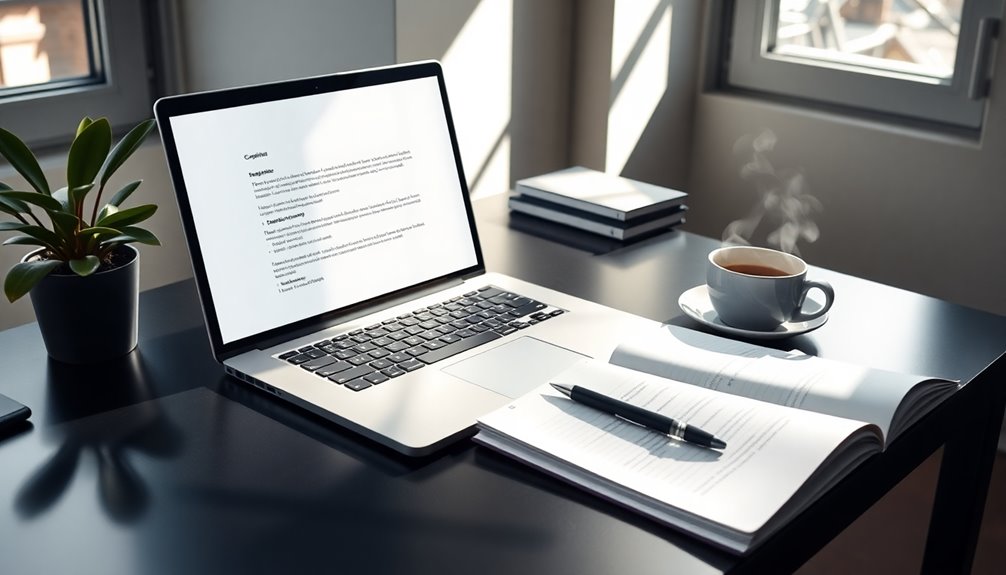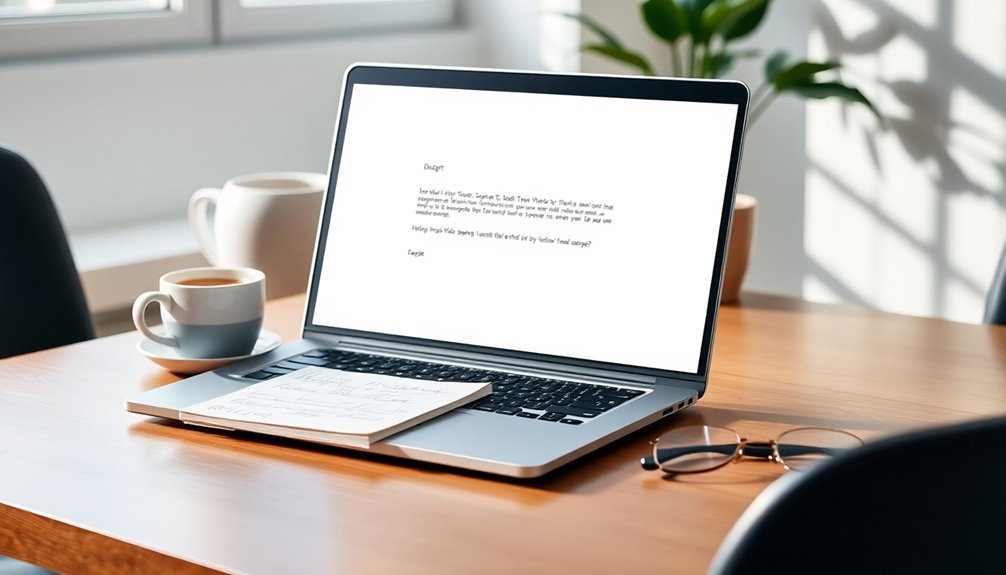To write sincerely in a professional email, start with a formal greeting that addresses the recipient by name. Keep your message clear and concise; focus on the main points without unnecessary details. Use bullet points to simplify complex information. For sign-offs, choose professional yet sincere closings like "Best regards" or "Kind regards," depending on your relationship. Always personalize your messages to reflect your rapport. Lastly, pay attention to timing for optimal engagement. Following these tips can help you convey sincerity while maintaining professionalism, and there's more that can elevate your email writing skills even further.
Key Takeaways
- Begin with a clear subject line that reflects the email's purpose to set a professional tone.
- Use a formal greeting, addressing the recipient by name to personalize the communication.
- Maintain a concise structure with well-organized paragraphs or bullet points for easy readability.
- Choose a sincere sign-off like "Sincerely" or "Best regards" to convey professionalism and respect.
- Proofread the email to eliminate errors and ensure clarity, enhancing your credibility.
Introduction
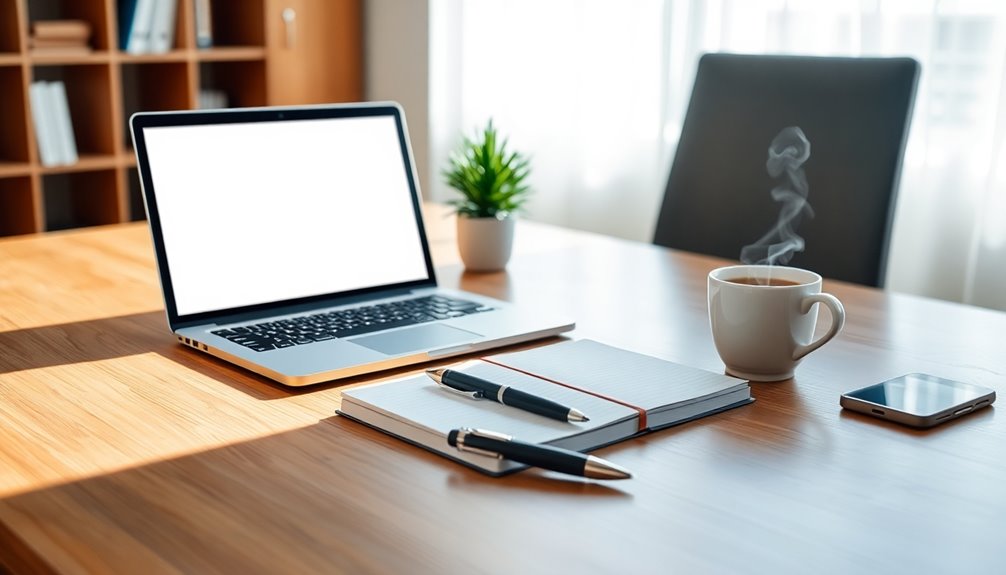
Writing a sincere email is essential for effective communication, and it starts with understanding your purpose. When you set out to write an email, clarity is key. Ensure the recipient grasps your message's intent right away.
Begin with a formal greeting, like "Dear [Recipient’s Name]," to establish a professional tone that shows respect and intention.
As you craft the body of your email, aim for conciseness. Stick to the main points to convey your sincerity effectively. Avoid unnecessary jargon or overly complex sentences; instead, focus on clear, straightforward language that resonates with the recipient.
This not only respects their time but also enhances your credibility.
Don't forget to wrap up your email with a thoughtful sign-off, such as "Sincerely" or "Best regards." A proper closing reinforces professionalism and leaves a positive impression, indicating you value the recipient's attention and time.
Builds Rapport and Trust
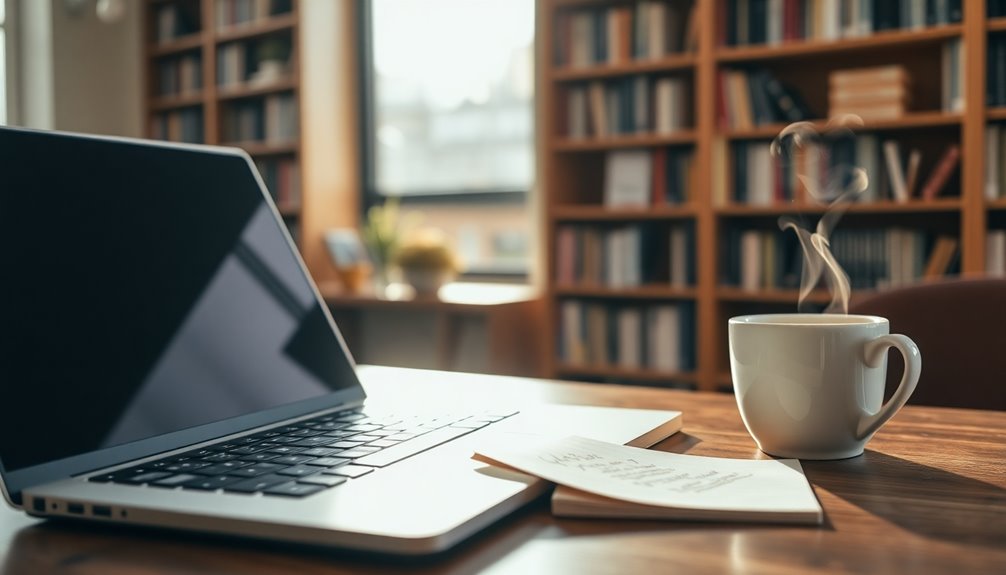
A sincere email isn't just about the message you convey; it's also about how you connect with the recipient. When you use a sincere sign-off, like "Best regards" or "Warmly," you demonstrate professionalism and enhance your credibility. This thoughtful approach to communication fosters rapport and builds trust between you and your recipient.
Personalized sign-offs can significantly increase response rates. By tailoring your closing to reflect your relationship with the recipient, you show that you value the connection. This attentiveness not only makes your emails more engaging but also reinforces trust, making it more likely that recipients will respond positively in the future. Utilizing effective email etiquette can further enhance your communication strategy and ensure your messages are well-received. In addition, building a solid credit score can enhance your professional credibility and influence how others perceive your communication style. Furthermore, maintaining an organized email list can lead to better engagement and response rates with your audience through targeted communication, as seen in email marketing best practices.
Using respectful language in your sign-offs further helps to build rapport. It shows consideration for the recipient's feelings and perspective, which is a key element of effective email etiquette.
Consistency in using sincere sign-offs across your communications also contributes to a reliable image, encouraging ongoing engagement. As you master these elements, you'll find that your emails not only convey information but also strengthen the relationships that matter in your professional life.
Additionally, reflecting on past mistakes in your communication can help you refine your approach and improve future interactions. Embrace this approach, and watch how your communication transforms.
Clear and Concise Messaging
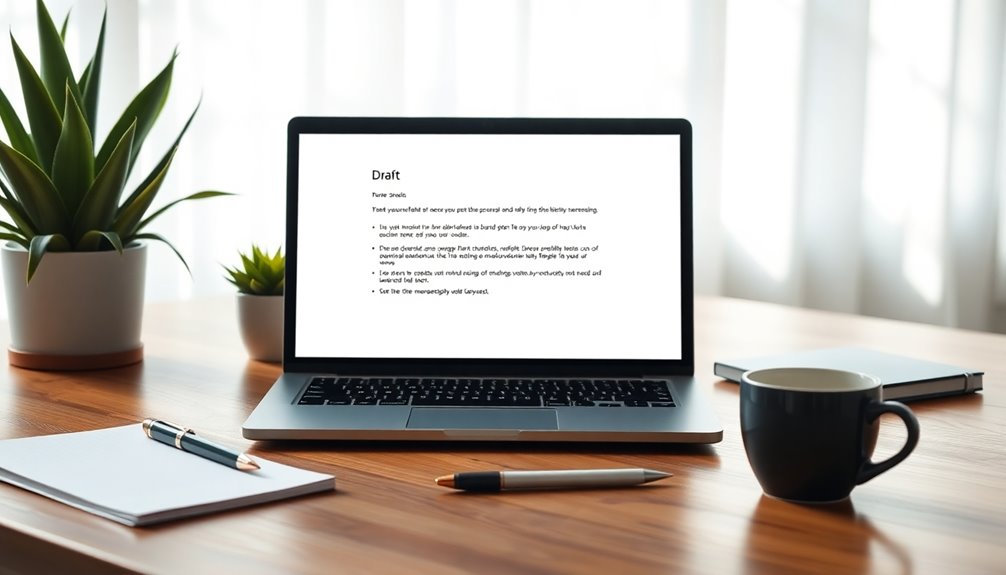
Effective email communication hinges on clear and concise messaging. When you craft professional emails, aim to present your main points without overwhelming the recipient with unnecessary details.
Studies show that emails with a clear structure and concise language significantly enhance response rates, as they respect the recipient's time and encourage engagement. Incorporating high-quality content into your email can further establish your credibility, making it more likely that your message will be taken seriously. Additionally, ensuring your email is well-structured can improve user experience, leading to better engagement from your recipients. Adopting a MVP approach to testing ideas quickly can also apply to your email strategy, allowing you to refine your communication style over time. Moreover, utilizing structured data can help enhance the clarity of your message, ultimately supporting the recipient's understanding of your points. Furthermore, your email can reflect energy-efficient technology benefits, showcasing your commitment to sustainability.
Using bullet points or numbered lists can break down complex information, making it easier for recipients to follow along and respond to specific queries. A well-crafted subject line that summarizes the email's purpose adds to this clarity, prompting recipients to prioritize reading your message.
Tone of the message also matters; maintaining a polite and professional demeanor while ensuring your written communication is straightforward helps foster effective understanding.
Avoiding jargon and overly complicated language ensures your email remains accessible to a broader audience. This approach not only enhances clarity but also builds rapport with your readers.
Step-by-Step Guide to Sign-offs

The right sign-off can leave a lasting impression on your email's recipient. When you sign off an email, think about the tone you want to convey. For a professional email, options like "Best regards" or "Sincerely" are ideal for emails that require a formal tone.
If you're aiming for something friendly yet professional, consider "Kind regards" or "Warmest wishes," especially for familiar contacts. Personalizing your sign-off based on your relationship with the recipient is crucial. Tailor it to the context of your message; for example, if you're delivering bad news, a supportive phrase like "Thank you for your understanding" can soften the blow.
Always ensure proper punctuation and spelling—this reflects your professionalism and attention to detail. Be mindful of the recipient's preferences and generational differences. Younger professionals may appreciate more casual sign-offs, while older generations might prefer traditional formalities.
Ultimately, the sign-off you choose should resonate with the overall emails tone and reflect the nature of your corporate correspondence. Remember, a thoughtful sign-off can enhance the impact of your message and strengthen your professional relationships. Additionally, maintaining a positive online presence is essential for professional communication, as it can influence how recipients perceive your brand or personal image, especially when considering online reputation management.
Dos and Don'ts for Professional Emails
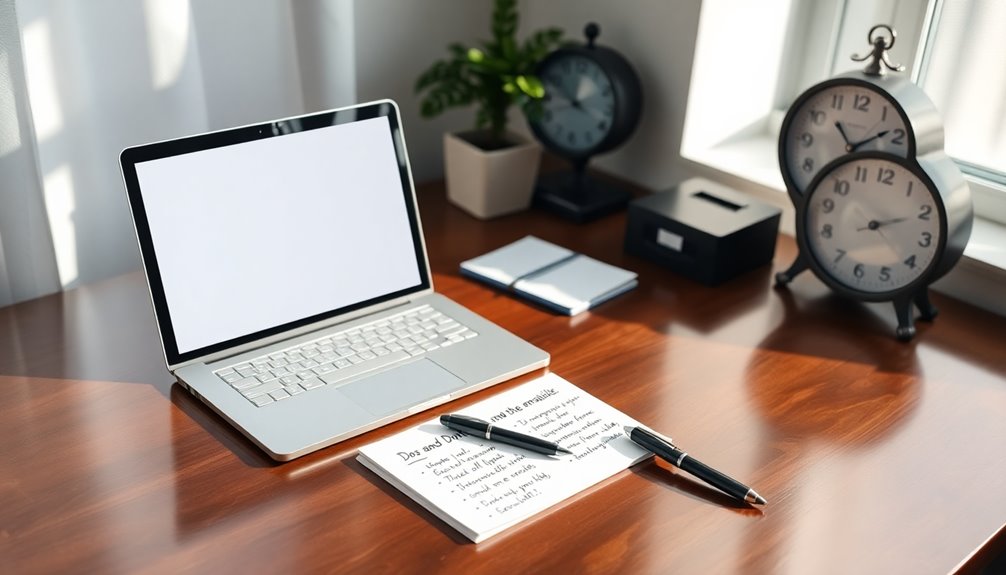
When crafting professional emails, it's essential to keep a few key dos and don'ts in mind to ensure your message is well-received.
First, always use a clear and concise subject line. This sets the tone for professionalism and helps the recipient prioritize their emails.
Next, personalize your greeting by addressing the recipient by name; this shows respect and consideration.
In the body of your email, maintain a well-structured format. Use paragraphs and bullet points to enhance readability and clarity. This makes it easier for your reader to grasp your message quickly. For example, a well-organized email can lead to improved productivity during outages, especially when recipients can quickly identify and respond to key points. Additionally, incorporating advanced segmentation techniques can help you tailor your messaging to better meet the specific needs of your audience. Moreover, existential themes in communication can encourage a deeper connection with your recipient. Using timing of emails strategically can also increase the likelihood of your message being read promptly.
Don't forget to proofread your email before hitting send. Grammatical errors and typos can undermine your professionalism and convey a lack of respect for the recipient. Additionally, utilizing data-driven marketing strategies can greatly improve your communication effectiveness by tailoring your message to your audience's needs and preferences.
Examples of Professional Sign-Offs
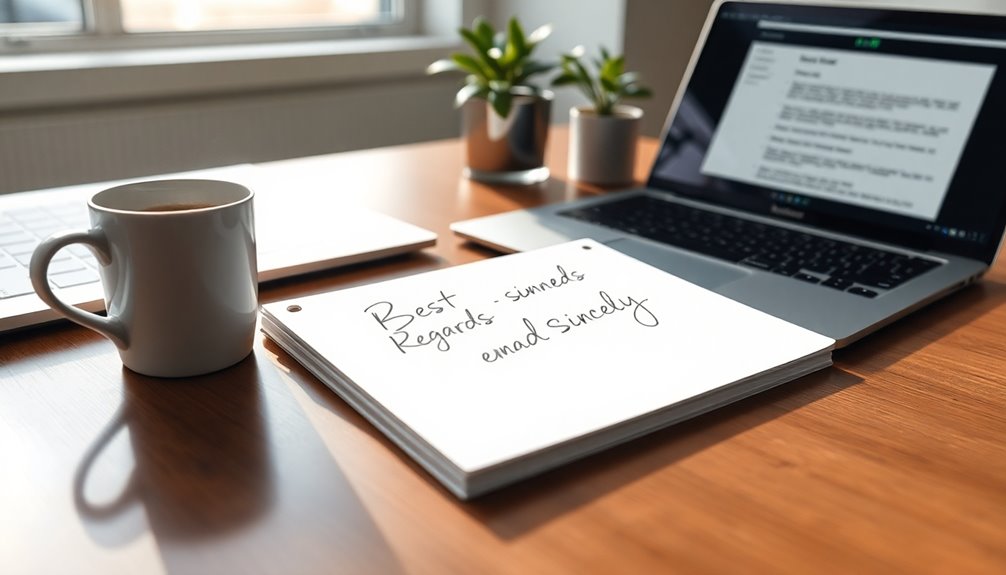
Choosing the right sign-off for your professional emails can significantly impact how your message is perceived. The best email sign-offs, like "Sincerely," "Best regards," and "Kind regards," convey professionalism and respect. When you tailor your sign-off to the tone and context of your email, you enhance clarity and engagement.
Consider your relationship with the recipient. If you're emailing a client or superior, formal options like "Best regards" or "Sincerely" are ideal. These sign-offs convey a sense of professionalism and respect.
Conversely, if you're communicating with a colleague, a casual tone with options like "Cheers" or "Thanks" can work well, adding a touch of friendliness.
Don't forget about the importance of gratitude. Using sign-offs like "Thanks in advance" can result in higher response rates, as a study by Boomerang shows. Additionally, maintaining a professional image in all communications can lead to better relationships and trust in the workplace.
Consistency in your choice of professional sign-offs reinforces your polished professional identity and enhances your brand image.
Ultimately, the right sign-off not only wraps up your email neatly but also leaves a lasting impression on the recipient.
Pro Tips for Writing Effective Emails
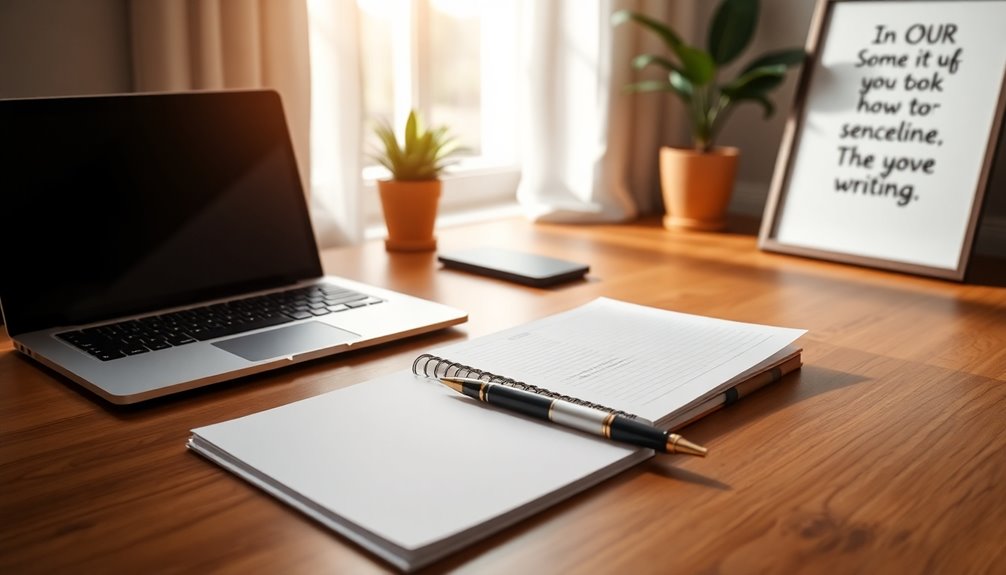
Effective email communication hinges on several key strategies that can make or break your message. Start with a clear subject line that accurately reflects your content. This helps increase open rates and engagement, essential in any business setting.
Use a professional salutation that suits the recipient's status and your relationship. For formal emails, "Dear [Name]" works best, while "Hi [Name]" is great for a friendly relationship.
Structure the body of your email with concise paragraphs, bullet points, or headings for better readability. This way, your key messages stand out. Always proofread your writing to catch grammatical errors and ensure clarity—attention to detail shows professionalism and respect for the recipient. Additionally, a well-composed email can enhance your user experience in professional communication. In the same way, a professional approach can help establish your business credibility with clients.
When you reach the end of your email, choose a thoughtful sign-off that aligns with your message's tone. "Best regards" is appropriate for professional contexts, while "Cheers" fits a more casual approach.
Final Thoughts
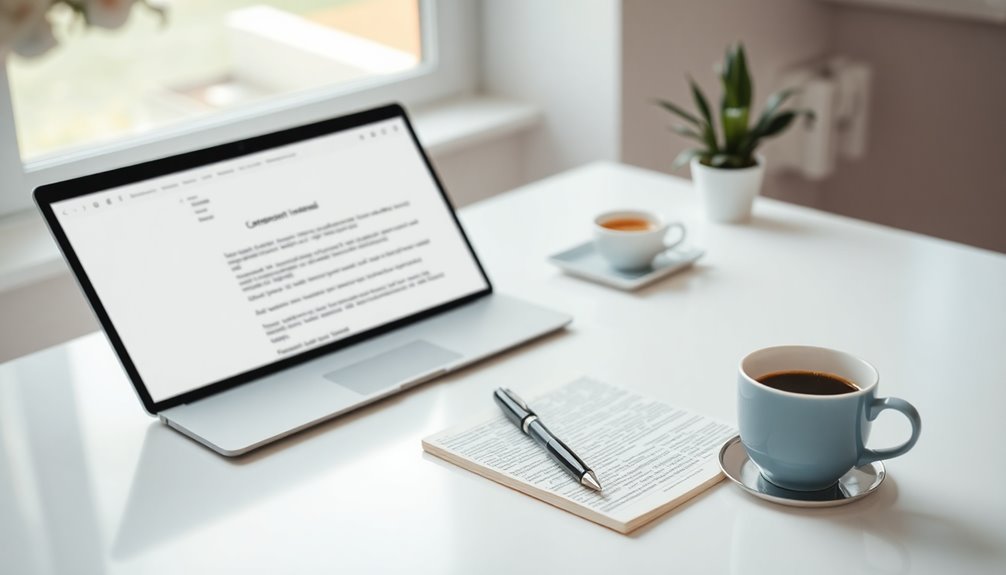
Crafting a sincere email can significantly impact your communication effectiveness. When you choose to sign off with "Sincerely," you're not just being polite; you're also showcasing your professionalism. This sign-off is particularly effective in formal correspondence, especially when you're addressing someone you don't know well. Incorporating SEO-focused strategies can enhance your email outreach and visibility in a professional context.
Remember, the tone of your email should align with your sign-off. While "Sincerely" is ideal for serious topics, more casual sign-offs might be better suited for friendly exchanges. To maintain engagement, consider using audience engagement strategies that resonate with your recipients.
Pay attention to detail when using "Sincerely." Proper punctuation and spelling matter; they reflect your commitment to professionalism and enhance your credibility in business communications.
Consistency in using "Sincerely" across your emails can reinforce your brand image, making your correspondence more recognizable and trustworthy. Additionally, incorporating elements from the Law of Attraction can help you focus your intentions and foster a positive mindset in your correspondence.
Keep in mind that thoughtful closing remarks can significantly influence response rates. Studies show that sign-offs like "Thanks in advance" often yield higher engagement, so consider your options based on the context.
Ultimately, whether you opt for a formal or casual tone, being sincere in your email will help you build stronger professional relationships.
Frequently Asked Questions
How Do You Politely End a Professional Email?
To politely end a professional email, choose an appropriate sign-off like "Sincerely" or "Best regards."
Follow this with a brief closing statement, such as "Thank you for your time" or "Looking forward to your response."
Make sure to check your spelling and punctuation to maintain a polished image.
Tailor your closing based on your relationship with the recipient, ensuring it fits the level of formality required for the situation.
How Do You End a Friendly but Professional Email?
To end a friendly but professional email, choose a sign-off that reflects your relationship with the recipient.
You might use "Best regards" or "Warm wishes" to maintain a nice balance. Adding a personal touch, like "Hope you have a great week ahead!" shows you care.
Don't forget to include a call to action, such as "Looking forward to your response," to encourage engagement while keeping the tone friendly and approachable.
How Do You Write Professionally Friendly in an Email?
To write professionally friendly in an email, start with a warm greeting like "Hello [Name],".
Personalize your message by referencing past conversations or shared interests, which builds rapport.
Keep your language clear and approachable, avoiding jargon or overly casual phrases.
Balance your tone throughout the email, and conclude with a positive sign-off, such as "Best regards."
How Do You Maintain Professionalism in Email?
To maintain professionalism in your email, start with a clear subject line that reflects the content.
Use a respectful greeting like "Dear [Name]" to set a formal tone. Keep your language polite and avoid slang, ensuring your message is serious.
Proofread for any errors, as attention to detail matters.


